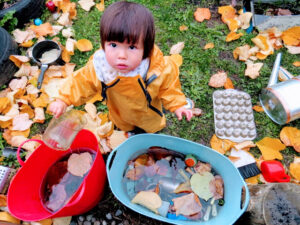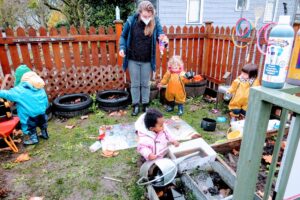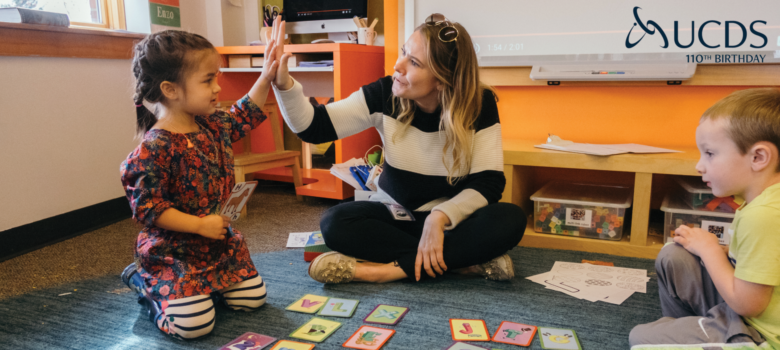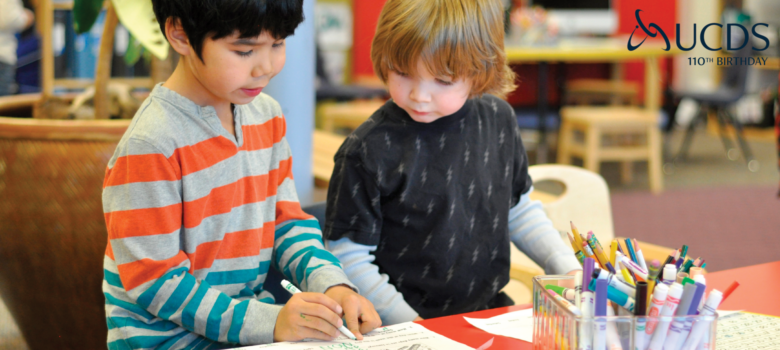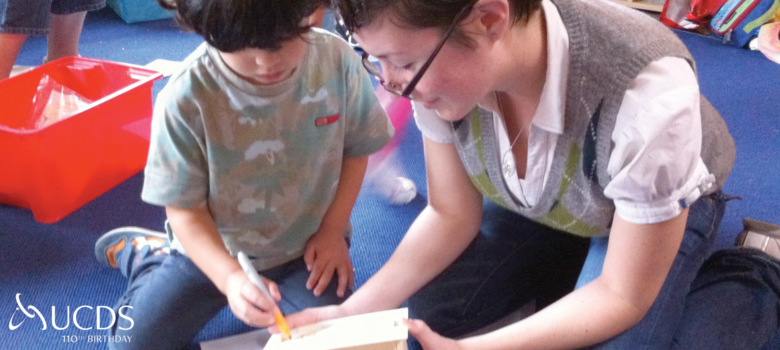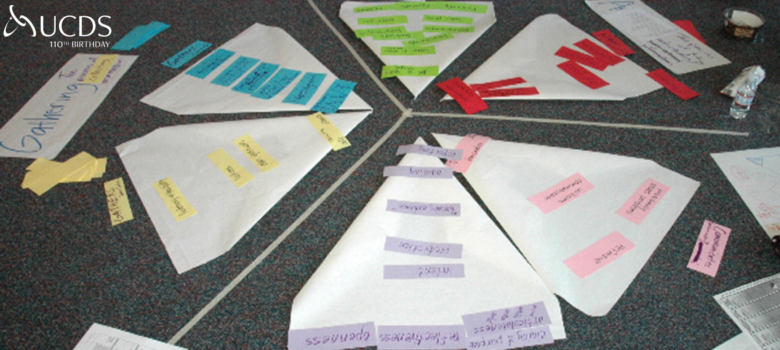by Marianne Sardelich, Infant-Toddler Education Teacher
I’d like to propose that it is a universal truth of early childhood education that there is always a “problem” area at your school. One spot, inside or outside, that children won’t spend more than five minutes in no matter the engaging materials you put there, cozy furnishings you try to lure them in with, or exciting projects you do there. It is a space that is regularly the subject of teacher meetings. What is “wrong” with the space is discussed in-depth and lots of ideas for troubleshooting or redesigning the space are planned. For the past few years, our mud kitchen in our outdoor play space has been the UCDS Infant-Toddler Education program’s “problem” area. It was created with the intent to have a place where children could muck about, but it’s been mostly ignored by both teachers and children. We couldn’t quite put a finger on the “problem” with the mud kitchen but we also hadn’t been able to figure out what to do to make it better.
This year, we’ve decided to embrace our mud kitchen area by making it the focus of one of our ERC groups. ERC stands for Exploring Relationships and Connections and it is the title we have given to the dedicated time in our program when groups of 4-6 children work together on an in-depth project focused on a specific idea or inspiration. Every week, children venture out in these groups to explore, build relationships, and connect through child-directed and teacher-supported exploration. Teachers spend the year closely observing, reflecting, and responding to what the children are doing, wondering, and creating.
Inspired by the practices of place-based learning, which centers the educational process in the environment, our mud kitchen exploration is giving us the opportunity to study our mud kitchen as a unique place. As children work with water, dirt, plants, and other natural materials, we are considering what meanings and connections they are making through this type of play. We try to pay attention to the features of the space that they are drawn to, what natural materials they explore, and the ways the environment is both conducive and challenging for learning. So far we’ve learned that the mud kitchen is the perfect place for exploring the properties of water and practicing motor skills like scooping and dumping. By bringing tempera paints and different surfaces into the space, we are testing out the possibilities for art projects in our mud kitchen. As the year continues, we look forward to seeing how the space changes with the seasons and how this influences the ways children explore and connect.
By studying our mud kitchen, I have come to see it not as a “problem” space but as a space that needed a commitment. The mud kitchen needed a group of children to study and explore it and teachers who were determined to find its hidden potential. I realized that these so-called “problem” spaces are actually just places where the possibilities for learning haven’t been discovered yet and that perhaps the easiest way to learn what to do with a challenging space is to watch children play in it.


